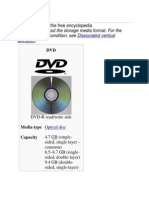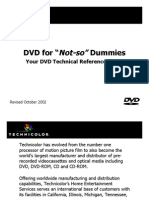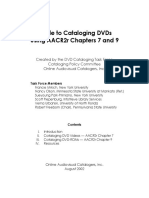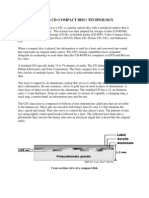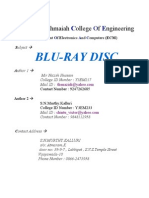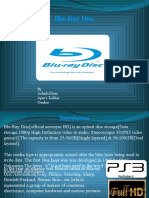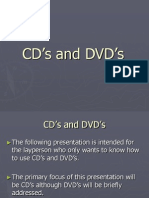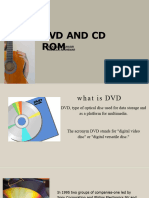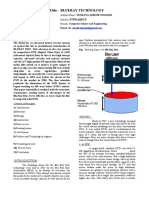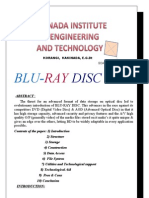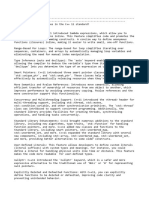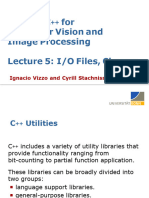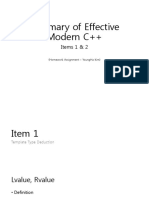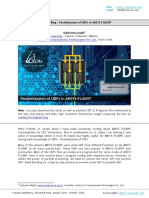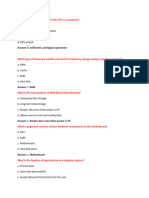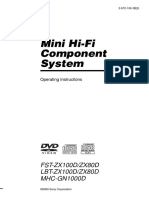0% found this document useful (0 votes)
213 views10 pagesDVD Overview & Features
DVD was created in 1994 as two competing formats that later agreed to a single standard. DVD offers higher storage capacity than CDs through a dual-layer design. Key applications include DVD-Video for movies, DVD-ROM for computers, and recordable formats for backups. DVD technology continues to develop with new specifications and has become popular for video, multimedia, games and audio applications.
Uploaded by
Tamás BenyácsCopyright
© © All Rights Reserved
We take content rights seriously. If you suspect this is your content, claim it here.
Available Formats
Download as PDF, TXT or read online on Scribd
0% found this document useful (0 votes)
213 views10 pagesDVD Overview & Features
DVD was created in 1994 as two competing formats that later agreed to a single standard. DVD offers higher storage capacity than CDs through a dual-layer design. Key applications include DVD-Video for movies, DVD-ROM for computers, and recordable formats for backups. DVD technology continues to develop with new specifications and has become popular for video, multimedia, games and audio applications.
Uploaded by
Tamás BenyácsCopyright
© © All Rights Reserved
We take content rights seriously. If you suspect this is your content, claim it here.
Available Formats
Download as PDF, TXT or read online on Scribd
/ 10




